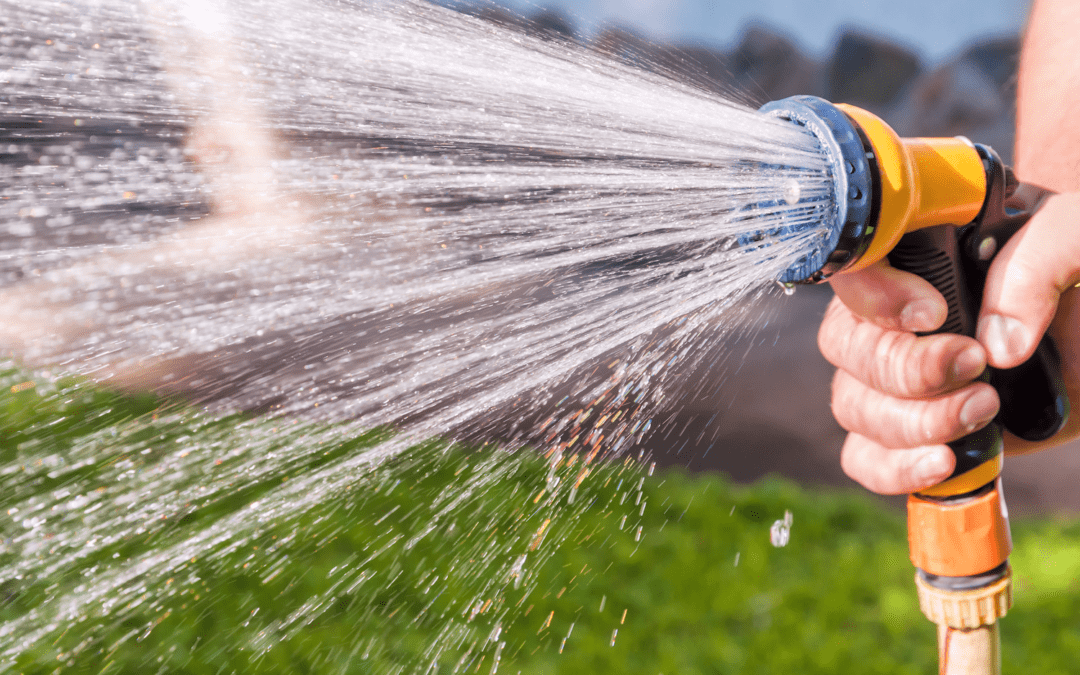When the weather is hot, how can you tell if your lawn and garden are getting enough water?
First, it’s not necessary to water lawns and plants every day. As a general rule, more plants are killed through over-watering than under-watering.
Second, understand the properties of the soil in your area. Water penetrates and behaves differently in differing types of soil — e.g., sandy or loose soil vs. clay. Check with your local nursery for watering tips for your local area. Set up a system that allows effective watering with penetration of 6″ to 8″ below the ground surface.
The basic fact is that you’ll need to find out how deeply the water is penetrating into the soil. To do that, all that’s needed is a shovel. Pick an inconspicuous spot where you’ve been irrigating. About 30 minutes after watering, dig a small hole and use your hand to check how deeply the water has penetrated. In most lawn and garden situations, it’s best if water is penetrating 6″ to 8″ beneath the surface of the soil.
Check several locations to see if irrigation is even throughout the yard. If there are dry spots, you may need to modify your irrigation techniques.
Watering systems are not always uniform in how they disperse water. Even if you water regularly, you may find that there are wet spots and dry spots around your yard. To check whether your watering system is working evenly across your yard, here’s a trick you can use to test it. Take some plastic cups and place them around your yard before you water. You can place a few coins in the bottoms of the cups to prevent them from blowing over.
Once the cups are placed, turn on your sprinkler system. Water will collect in the cups as you water.
After watering for about 30 minutes, compare the level of water in each of the cups. You may discover that there is more water in some of the cups than in others. Frequently, areas within close proximity to the sprinkler receive less water than areas several yards away. You may need to check the directions that come with your sprinkler to make it apply water more uniformly.
For watering shrubs and beds, there are techniques and tools that are more effective than ordinary lawn sprinklers. Dripper systems use a hose attached to a faucet and timer. Small holes are placed at appropriate locations along the length of a polyethylene hose. Tiny adapters are inserted into the holes to allow small 1/4-inch hose branches to be installed along the length of the hose. Water emitters of various types are attached at the ends of the smaller branches.
Water emitters — such as small spray-heads — can be placed strategically beneath individual plants to deliver water exactly where it’s most needed.
Another useful tool is the soaker-hose system. Like the dripper system, the soaker system uses a timer and a main hose to which smaller branches are attached. In this case, the smaller hoses are manufactured with “weeping pores” that allow water to soak out all along their length. Once the porous branches are attached to the main hose, and placed strategically at the bases and root systems of plants, the water is turned on. The soaker hose allows moisture to soak gently into the soil.
Share Source










